Student Success & The Northern Experience
Gain the skills and knowledge to assist members of a veterinary team. Through our one-year Veterinary Assistant certificate program, you’ll learn to prepare medication, counsel clients on patient care, and assist with lab work and surgery preparation under the direction of a veterinarian or designate.
This program prepares you for a fulfilling career in animal care and may be completed concurrently with our Animal Grooming program.
Does this program sound like a good fit for you?
Connect with us to learn more.
Course Information
Semester 1
This course will educate students on how to handle and care for various companion animals, both large and small. This course will also prepare the student to work proficiently in a grooming facility. The student will learn and practise proper bathing procedures. The student will also be able to recognize and care for skin and coat conditions and will learn proper ear and nail care. They will also learn how to communicate effectively with their clients.
42 Hours
This course will enable the students to become familiar with specific employment requirements for their field of interest. The students will also have the opportunity to learn how to self-market for job finding, as well as how to maximize their potential for success in an interview situation. This course is designed to assist students in obtaining employment. Students will also learn to prepare themselves for varied Fieldwork Placements. This semester will concentrate on incorporating skills from the Client Relations Course to further develop their interpersonal communication skills through their ability to prepare for an employment interview. The course will also discuss work ethics and the role they play in long term employability.
14 Hours
The course is designed to help students gain insights and skills to promote personal and professional development. Students will develop an understanding of how they manage their lives and incorporate skills to maximize their strengths and reduce the impact of less effective techniques. Students will learn about resources that are available to them and the intelligence of accessing additional support when needed. The content of this course provides students with the opportunity to lay a foundation for lifelong learning; learn to communicate effectively, build and value productive and satisfying diverse relationships and prepare for the challenges and rewards that make life meaningful.
42 Hours
This is the first of two courses designed to teach the student the basics of anatomy and physiology. The levels of organization within the body will be discussed. The function of body organs and systems will be described and related to the common diseases the student may encounter in a clinical environment. Students will learn appropriate directional and anatomical terminology as well as terminology related to common medical conditions. This course focuses on the structure and function of the dog and cat.
28 Hours
This course deals with animal husbandry. The student will learn to assist with restraint of companion animals. Emergency Triage will be covered, as well as patient admittance into a Veterinary hospital and discharge. Pharmacology will be covered in this course. The assistant must be proficient in recognizing legal issues involving drugs in the workplace, recognize general types and groups of drugs and describe prescription label requirements. Labelling, packaging and dispensing of prescription medication will also be covered. Biological therapeutic agents will be discussed.
42 Hours
Animal care providers often handle animals with behaviour problems. They must know what advice to give and when to refer the problem to the veterinarian. The animal care provider must also know the procedure involved in referral to a behavioural specialist and/or obedience trainer.
28 Hours
This one semester course is designed for the Animal Grooming, Veterinary Assistant, Veterinary Technician and the Veterinary Technology programs. The course is designed to look at their role in the daily operation of a veterinary practice. The course will include sections on customer service, telephone skills, and welcoming skills, confrontation and conflict resolution. The course will assist students in becoming more comfortable assisting clients through the grief cycle. There will be a component on Client Communication utilizing both oral and written communication in the veterinary practice. This course will have a self-directed on line grammar component. This course will enable the students to practice the skills required for effective work in client relations.
42 Hours
This course will deal with the general needs of large animal veterinary practice. The veterinary assistant will develop an appreciation for livestock medical and surgical techniques, and commonly encountered conditions. The student will acquire general understanding of clinical procedures, bandaging, reproduction, biosecurity, animal handling and restraint. Proper sample collection and animal identification for official certificates will be reviewed. The student will also become familiar with the general clinical examination of equine and ruminant species. Particular emphasis will be placed on preparing the student for interaction with large animal clients.
28 Hours
This course will outline the fundamentals of animal restraint and the factors that influence behaviour. Handling, restraining, feeding, and analyzing of cats, dogs and lab animals will be emphasized. Proper forms of animal approach, handling, restraint, and release will be demonstrated and practiced by the student. All classes will start with a lecture and/or demonstration on how to perform the procedure, followed by a lab of applying that knowledge.
28 Hours
This course will commence the student’s study of the basic components of the veterinary lab. The veterinary assistant must develop competency in applying safety procedures, practicing aseptic techniques, ensuring quality control and preparing samples for analysis when assisting other members of the veterinary team.
28 Hours
This course will prepare the student to function in a veterinary environment. Students will provide care for the colony animals housed at Northern College. The use of Standard Operating Procedures will assist the student. The Veterinary Science facility simulates the professional environment and enables the students to learn the skills necessary to function as a productive team member.
14 Hours
This course will educate students on how to handle and care for various companion animals, both large and small. This course will also prepare the student to work proficiently in a grooming facility. The student will learn and practise proper bathing procedures. The student will also be able to recognize and care for skin and coat conditions and will learn proper ear and nail care. They will also learn how to communicate effectively with their clients.
42 Hours
This course will enable the students to become familiar with specific employment requirements for their field of interest. The students will also have the opportunity to learn how to self-market for job finding, as well as how to maximize their potential for success in an interview situation. This course is designed to assist students in obtaining employment. Students will also learn to prepare themselves for varied Fieldwork Placements. This semester will concentrate on incorporating skills from the Client Relations Course to further develop their interpersonal communication skills through their ability to prepare for an employment interview. The course will also discuss work ethics and the role they play in long term employability.
14 Hours
The course is designed to help students gain insights and skills to promote personal and professional development. Students will develop an understanding of how they manage their lives and incorporate skills to maximize their strengths and reduce the impact of less effective techniques. Students will learn about resources that are available to them and the intelligence of accessing additional support when needed. The content of this course provides students with the opportunity to lay a foundation for lifelong learning; learn to communicate effectively, build and value productive and satisfying diverse relationships and prepare for the challenges and rewards that make life meaningful.
42 Hours
This is the first of two courses designed to teach the student the basics of anatomy and physiology. The levels of organization within the body will be discussed. The function of body organs and systems will be described and related to the common diseases the student may encounter in a clinical environment. Students will learn appropriate directional and anatomical terminology as well as terminology related to common medical conditions. This course focuses on the structure and function of the dog and cat.
28 Hours
This course deals with animal husbandry. The student will learn to assist with restraint of companion animals. Emergency Triage will be covered, as well as patient admittance into a Veterinary hospital and discharge. Pharmacology will be covered in this course. The assistant must be proficient in recognizing legal issues involving drugs in the workplace, recognize general types and groups of drugs and describe prescription label requirements. Labelling, packaging and dispensing of prescription medication will also be covered. Biological therapeutic agents will be discussed.
42 Hours
Animal care providers often handle animals with behaviour problems. They must know what advice to give and when to refer the problem to the veterinarian. The animal care provider must also know the procedure involved in referral to a behavioural specialist and/or obedience trainer.
28 Hours
This one semester course is designed for the Animal Grooming, Veterinary Assistant, Veterinary Technician and the Veterinary Technology programs. The course is designed to look at their role in the daily operation of a veterinary practice. The course will include sections on customer service, telephone skills, and welcoming skills, confrontation and conflict resolution. The course will assist students in becoming more comfortable assisting clients through the grief cycle. There will be a component on Client Communication utilizing both oral and written communication in the veterinary practice. This course will have a self-directed on line grammar component. This course will enable the students to practice the skills required for effective work in client relations.
42 Hours
This course will deal with the general needs of large animal veterinary practice. The veterinary assistant will develop an appreciation for livestock medical and surgical techniques, and commonly encountered conditions. The student will acquire general understanding of clinical procedures, bandaging, reproduction, biosecurity, animal handling and restraint. Proper sample collection and animal identification for official certificates will be reviewed. The student will also become familiar with the general clinical examination of equine and ruminant species. Particular emphasis will be placed on preparing the student for interaction with large animal clients.
28 Hours
This course will outline the fundamentals of animal restraint and the factors that influence behaviour. Handling, restraining, feeding, and analyzing of cats, dogs and lab animals will be emphasized. Proper forms of animal approach, handling, restraint, and release will be demonstrated and practiced by the student. All classes will start with a lecture and/or demonstration on how to perform the procedure, followed by a lab of applying that knowledge.
28 Hours
This course will commence the student’s study of the basic components of the veterinary lab. The veterinary assistant must develop competency in applying safety procedures, practicing aseptic techniques, ensuring quality control and preparing samples for analysis when assisting other members of the veterinary team.
28 Hours
This course will prepare the student to function in a veterinary environment. Students will provide care for the colony animals housed at Northern College. The use of Standard Operating Procedures will assist the student. The Veterinary Science facility simulates the professional environment and enables the students to learn the skills necessary to function as a productive team member.
14 Hours
Semester 2
Improving your knowledge and understanding of the history of the Indigenous peoples of what we now call Canada is an important step to enable Indigenous and non-Indigenous people, organizations, and communities to work together more respectfully. Throughout this course you will have the opportunity to learn, discuss and reflect about many topics that are relevant in the learning journey towards reconciliation.
42 Hours
Students will be expected to spend 80 hours at the clinic where they have arranged placement. The clinic must be able to provide the necessary work experiences. Students will perform the duties regularly expected of a student with the knowledge and skills taught in the one-year Veterinary Assistant program. The placement will give students the opportunity to consolidate their knowledge and skills learnt at the college via a (typically) two-week experience supporting the DVMs, RVTs and other staff working in a veterinary clinic. The prerequisites for this course are all other Veterinary Assistant courses.
80 Hours
This course provides a review of basic mathematics as well as a range of mathematical skills to aid the student in problem solving, conversions, and understanding basic mathematical tasks seen regularly as a veterinary assistant. The student will gain a deeper understanding of many applied mathematical calculations including dosage calculations (used in the administration of medications) and basic business calculations (used in reception tasks and business owner tasks).
14 Hours
The course will cover the fundamental concepts of shelter medicine, including the importance of the 5 Freedoms, proper training of volunteers and the creation, following and revision of standard operating procedures. The course discusses a number of very important concepts that will help to maintain the physical and mental well-being of the animals within a shelter’s environment including: sanitation procedures and cleaning rotations, enrichment, daily rounds, an appropriate length of stay and a shelter’s capacity for care, community outreach, trap-neuter release programs, and public education. At the successful completion of this course the student will have an introductory understanding of animal shelter environments.
14 Hours
This course covers the basic concepts of nutrition and provides students with sufficient understanding to advise clients on the nutritional needs of large and small animals at various life stages. While the major focus of the course if on feeding the healthy animal, the dietary needs of dogs and cats with specific organ diseases are also covered. Students are introduced to common dietary toxicities and deficiencies encountered in small animal companion medicine.
28 Hours
This course will outline the fundamentals of basic animal procedures that may occur in a small animal clinic setting. Handling and restraining will be emphasized during basic procedures such as; bandaging, emergency triage, proper sample collection and handling, equipment uses during emergency situations. All classes will start with a lecture and/or demonstration on how to perform the procedure, followed by a lab of applying that knowledge.
28 Hours
This course will encompass all aspects of grooming procedures for the companion animal. It will prepare the student to recognise and care for various skin disorders. All areas of concern will be discussed and practised in providing a safe environment for the groomer, workplace and the companion animal.
42 Hours
This course orients veterinary technicians/assistant to practice management with emphasis on marketing, communications, business operations, inventory control, scheduling, standard operating procedures, maintenance and retrieval of records, and occupational health and safety issues. By understanding the legalities that impact on veterinary practice, while at the same time appreciating the need to conserve costs and increase practice income, the graduating technician will be better prepared to contribute to the effective operation of the practice. The student will be expected to apply communication skills developed in the Client Relations course.
28 Hours
This is the second of two courses designed to teach the student the basics of anatomy and physiology. The levels of organization within the body will be discussed. The function of body organs and systems will be described and related to the common diseases the student may encounter in a clinical setting. Students will learn appropriate directional and anatomical terminology as well as terminology related to common medical conditions. This course focuses on the structure and function of the canine and feline species.
28 Hours
This course will prepare the student to function in a veterinary environment. Students will provide care for the colony animals housed at Northern College. The use of Standard Operating Procedures will assist the student. The Veterinary Science facility simulates the professional environment and enables the students to learn the skills necessary to function as a productive team member.
14 Hours
This course will give the student practical skills on specialized veterinary software packages such as Pulse (a “cloud-based” software-as-a-service solution you can access from anywhere via a web browser), and AVImark (a popular software used in veterinary office clinics which is installed on our on-campus computer lab workstations). Students will learn to set up files for new clients and/or new patients, bill clients for services and products, print appropriate certificates and prescription labels, as well as practice accepting payments.
28 Hours
Improving your knowledge and understanding of the history of the Indigenous peoples of what we now call Canada is an important step to enable Indigenous and non-Indigenous people, organizations, and communities to work together more respectfully. Throughout this course you will have the opportunity to learn, discuss and reflect about many topics that are relevant in the learning journey towards reconciliation.
42 Hours
Students will be expected to spend 80 hours at the clinic where they have arranged placement. The clinic must be able to provide the necessary work experiences. Students will perform the duties regularly expected of a student with the knowledge and skills taught in the one-year Veterinary Assistant program. The placement will give students the opportunity to consolidate their knowledge and skills learnt at the college via a (typically) two-week experience supporting the DVMs, RVTs and other staff working in a veterinary clinic. The prerequisites for this course are all other Veterinary Assistant courses.
80 Hours
This course provides a review of basic mathematics as well as a range of mathematical skills to aid the student in problem solving, conversions, and understanding basic mathematical tasks seen regularly as a veterinary assistant. The student will gain a deeper understanding of many applied mathematical calculations including dosage calculations (used in the administration of medications) and basic business calculations (used in reception tasks and business owner tasks).
14 Hours
The course will cover the fundamental concepts of shelter medicine, including the importance of the 5 Freedoms, proper training of volunteers and the creation, following and revision of standard operating procedures. The course discusses a number of very important concepts that will help to maintain the physical and mental well-being of the animals within a shelter’s environment including: sanitation procedures and cleaning rotations, enrichment, daily rounds, an appropriate length of stay and a shelter’s capacity for care, community outreach, trap-neuter release programs, and public education. At the successful completion of this course the student will have an introductory understanding of animal shelter environments.
14 Hours
This course covers the basic concepts of nutrition and provides students with sufficient understanding to advise clients on the nutritional needs of large and small animals at various life stages. While the major focus of the course if on feeding the healthy animal, the dietary needs of dogs and cats with specific organ diseases are also covered. Students are introduced to common dietary toxicities and deficiencies encountered in small animal companion medicine.
28 Hours
This course will outline the fundamentals of basic animal procedures that may occur in a small animal clinic setting. Handling and restraining will be emphasized during basic procedures such as; bandaging, emergency triage, proper sample collection and handling, equipment uses during emergency situations. All classes will start with a lecture and/or demonstration on how to perform the procedure, followed by a lab of applying that knowledge.
28 Hours
This course will encompass all aspects of grooming procedures for the companion animal. It will prepare the student to recognise and care for various skin disorders. All areas of concern will be discussed and practised in providing a safe environment for the groomer, workplace and the companion animal.
42 Hours
This course orients veterinary technicians/assistant to practice management with emphasis on marketing, communications, business operations, inventory control, scheduling, standard operating procedures, maintenance and retrieval of records, and occupational health and safety issues. By understanding the legalities that impact on veterinary practice, while at the same time appreciating the need to conserve costs and increase practice income, the graduating technician will be better prepared to contribute to the effective operation of the practice. The student will be expected to apply communication skills developed in the Client Relations course.
28 Hours
This is the second of two courses designed to teach the student the basics of anatomy and physiology. The levels of organization within the body will be discussed. The function of body organs and systems will be described and related to the common diseases the student may encounter in a clinical setting. Students will learn appropriate directional and anatomical terminology as well as terminology related to common medical conditions. This course focuses on the structure and function of the canine and feline species.
28 Hours
This course will prepare the student to function in a veterinary environment. Students will provide care for the colony animals housed at Northern College. The use of Standard Operating Procedures will assist the student. The Veterinary Science facility simulates the professional environment and enables the students to learn the skills necessary to function as a productive team member.
14 Hours
This course will give the student practical skills on specialized veterinary software packages such as Pulse (a “cloud-based” software-as-a-service solution you can access from anywhere via a web browser), and AVImark (a popular software used in veterinary office clinics which is installed on our on-campus computer lab workstations). Students will learn to set up files for new clients and/or new patients, bill clients for services and products, print appropriate certificates and prescription labels, as well as practice accepting payments.
28 Hours
Career Ready Graduates
Articulation Agreements
A number of articulation agreements have been negotiated with universities and other institutions across Canada, North America and internationally. These agreements are assessed, revised and updated on a regular basis. Please contact the program coordinator for specific details if you are interested in pursuing such an option.
Canadian Field of Study/CIP Code List
CIP Code: 01.8301
International students: check the Canadian Field of Study/CIP Code List to see if your program is eligible for the Post-Graduation Work Permit (PGWP).
Career Opportunities
Graduates may find employment in veterinary practices, federal and provincial institutions, universities, humane societies, pet food outlets, veterinary clinics, grooming facilities and kennels.
Explore labour market information for related careers and employment trend data from the Government of Canada Job Bank.
- Competently conduct veterinary office and hospital procedures related to client reception and customer service, patient admission, record-keeping and billing, and basic cleanliness and orderliness of a veterinary facility.
- Interact and communicate effectively, professionally, and ethically with clients and other members of the veterinary health team, and with an understanding of the roles and responsibilities of that team.
- Assist with veterinary pharmacy-related tasks that are within the scope of duties of a veterinary assistant, including recognizing general types and groups of drugs, as well as the legal issues involving all drugs; competently filling medications and maintaining inventories while safely dealing with hazardous waste; and supporting animal vaccinations.
- Conduct basic examination room procedures including restraining animal patients, recording basic vital signs, taking accurate history, identifying breeds and sex, providing exam room grooming, applying ear and eye medication, as well as being familiar with small animal nutritional requirements.
- Provide animal nursing in a safe and professional manner within the scope of duties of a veterinary assistant.
- Assist in performing surgical preparations and maintaining facility and equipment cleanliness, within the scope of the duties of a veterinary assistant.
- Provide assistance to laboratory procedures and record keeping, within the scope of duties of a veterinary assistant.
- Provide assistance to radiology and ultrasound imaging, within the scope of duties of a veterinary assistant.
Work Integrated Learning Opportunities
The Veterinary Assistant program includes a hands-on field placement in a veterinary or animal care facility. This placement gives students the opportunity to apply their knowledge in a real-world setting, gaining experience in animal handling, client communication, and day-to-day clinic operations. Work-integrated learning helps students build practical skills, gain insight into the profession, and make valuable connections within the animal care industry.
Graduate with a Double Certificate
This program may be taken concurrently with the Animal Grooming program. The student would then graduate with a double certificate. Please contact the Program Assistant at 705-672-3376 ext. 8854 or at vetsciences@northern.on.ca for more information.
Information for Graduates
A limited number of spots are available in our Veterinary Technician/Technology program for graduates of Northern College’s Veterinary Assistant program.
Graduates of this program that wish to apply to the Veterinary Technician program must have – in addition to the usual requirements for direct entry from high school – a 75 percent minimum average (3.0 GPA) upon graduation from Veterinary Assistant program.
Applicants will be assessed according to highest academic achievement in their program. Please contact the Program Assistant at 705-672-3376 ext. 8854 or at vetsciences@northern.on.ca for more information.
Accreditation
The Veterinary Science Centre and our Veterinary Technician program are accredited by:
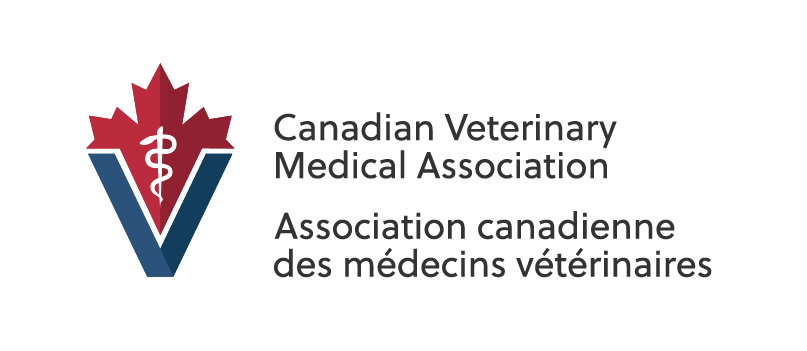
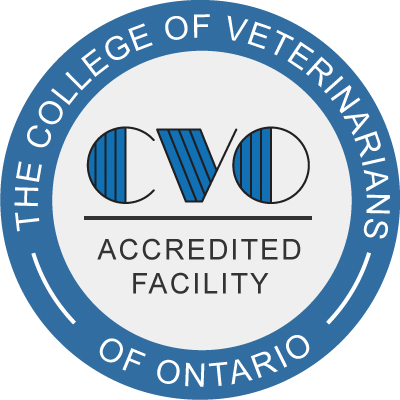
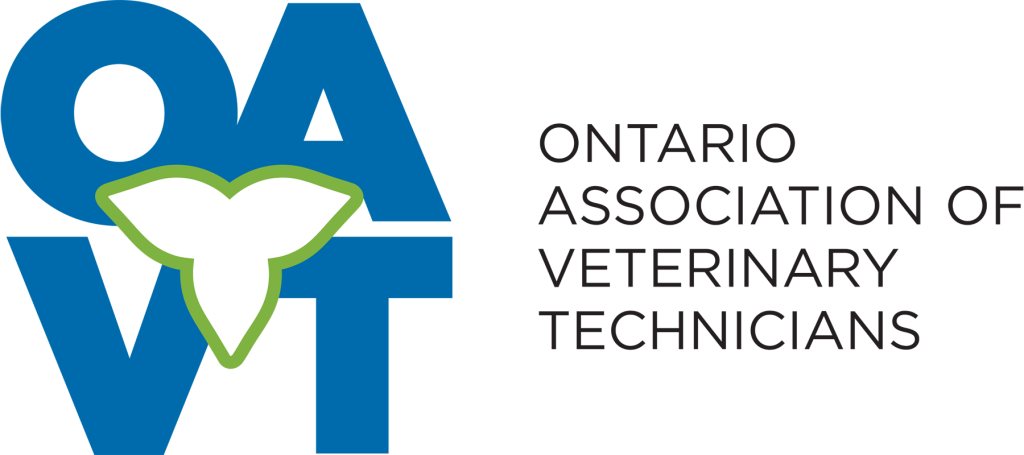
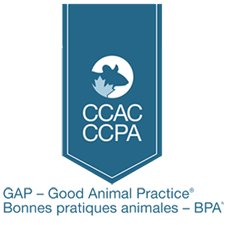
Admissions Information & Requirements
Admission Requirements
- Ontario Secondary School Diploma (OSSD)
- Grade 12 English (C, U)
- Grade 11 Biology (C, U)
Or equivalent
Academic prerequisites for this program may be obtained free of charge through Academic Upgrading.
Applicants who do not have a high school diploma or equivalent and will have reached the age of 19 years on or before the start of the program must undergo academic testing and may be required to complete Prior Learning Assessment & Recognition (PLAR) process to demonstrate equivalency of admission requirements prior to admission into a program.
For more details, please contact the Admissions Office at 705-235-7222 or admissions@northern.on.ca.
Additional Requirements for International Students
In addition to the admission requirements, international students must have proof of English Proficiency and meet the requirements below.
1. Proof of Senior High School Diploma/Certificate.
2. English Proficiency (we will require one of the following):
- IELTS Academic International English Language Testing System
a minimum overall score of 6.0 must be achieved with no individual band score under 6.0; however, we will accept one band at 5.5. - TOEFL (Test of English as a Foreign Language) – Internet Based Test (iBT) overall minimum score of 79.
- PTE (Pearson Test of English) Academic – Graduate Diploma: 58+.
- Duolingo: 105+
3. CO-OP Work Permit is mandatory for this program to participate in unpaid program placements.
If your country of citizenship has English as its official language, we may accept alternate proof of English Proficiency.
All educational documents must be submitted in English and will be dependent on the country of citizenship.
For more information, please contact admissions@northern.on.ca.
Program Specific Requirements & Additional Information
- Proficiency in word processing recommended.
- Rabies vaccine series or titre prior to start of program (at student’s expense). The rabies vaccinations/titre should be started in May or June, and proof is due by August 1.
- Some experience in a veterinary clinic or hospital is considered an asset.
Tuition, Fees & Payments
The tuition and fees information is typically updated yearly for the upcoming Academic Year in May. The amounts are for the full academic year.
Amounts may be based on last years tuition and fees and are subject to change.
If you are a current student, please refer to your Student Account or see a Student Services Clerk for the most up-to-date information.
Tuition
Domestic: $2,720.56
International: $15,257.86
Ancillary Fees
Ancillary fees vary by campus and support aspects of your experience as a Northern College student, such as Student Associations, Athletic Facilities, and Health Benefits.Ancillary fees are paid in full for the entire academic year in the first semester.
Please see Detailed Ancillary Fees for more information.
| Ancillary Fees by Campus (2024-25) | Domestic | International |
| Haileybury (HL) | $976.50 | $1,589.00 |
Find Your True North.
At Northern College, you’re a part of a community.
From your teachers to support staff and administrators, we are all here to help you get an education and make some lasting connections along the way.
Your success is incredibly important to you, so we provide student supports to help you achieve your goals. From study assistance and accessibility services to mental health supports and financial aid, we’ve got you covered.
Each of Northern’s campuses boasts exercise facilities, a gym, cafeteria, study areas and a library – places that you can go to help keep you focused as you work your way through your studies. The communities we call home are incredible places, filled with amazing people and things to do.
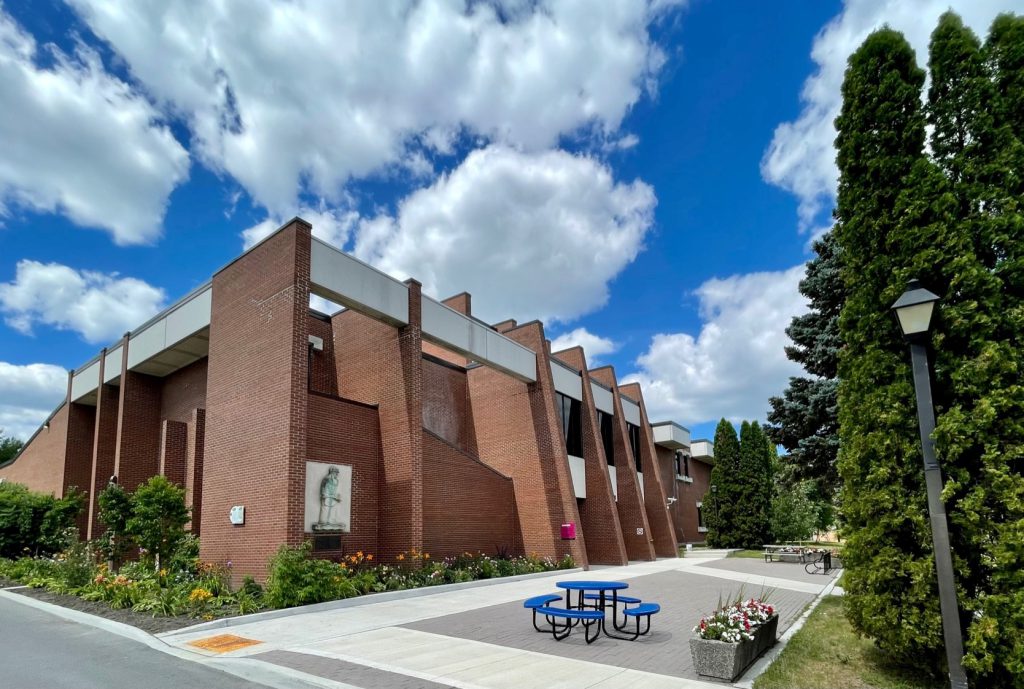
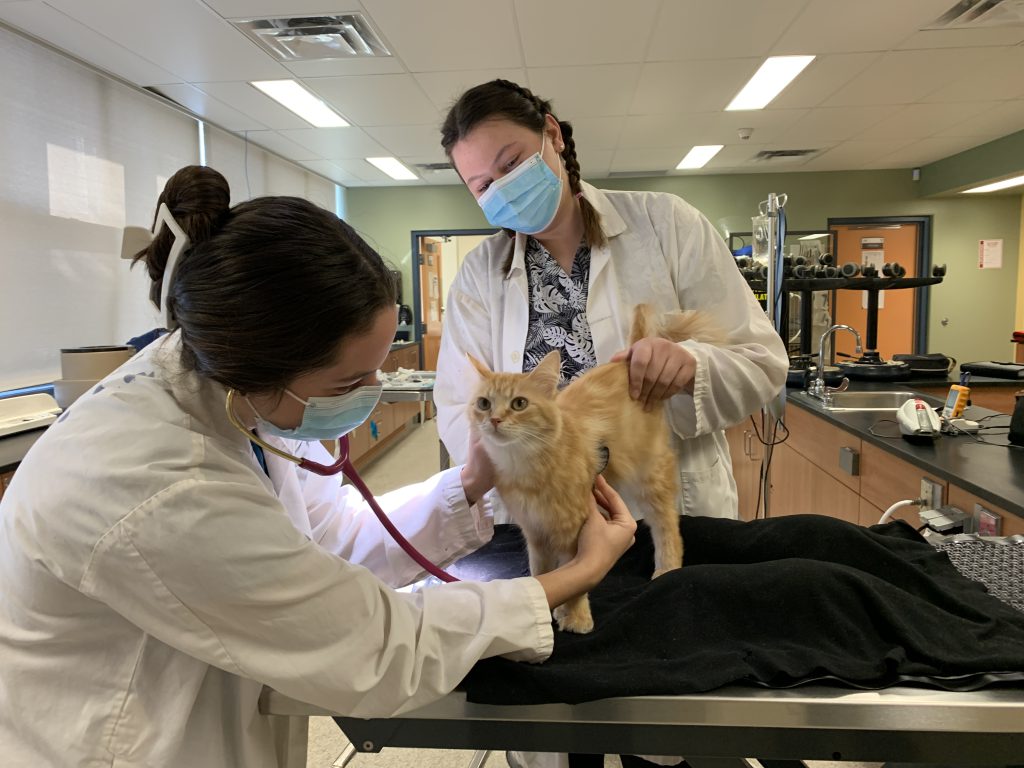
Does Northern College sound like a good fit for you?
Here’s how to take your first steps on your new exciting and rewarding career path.
